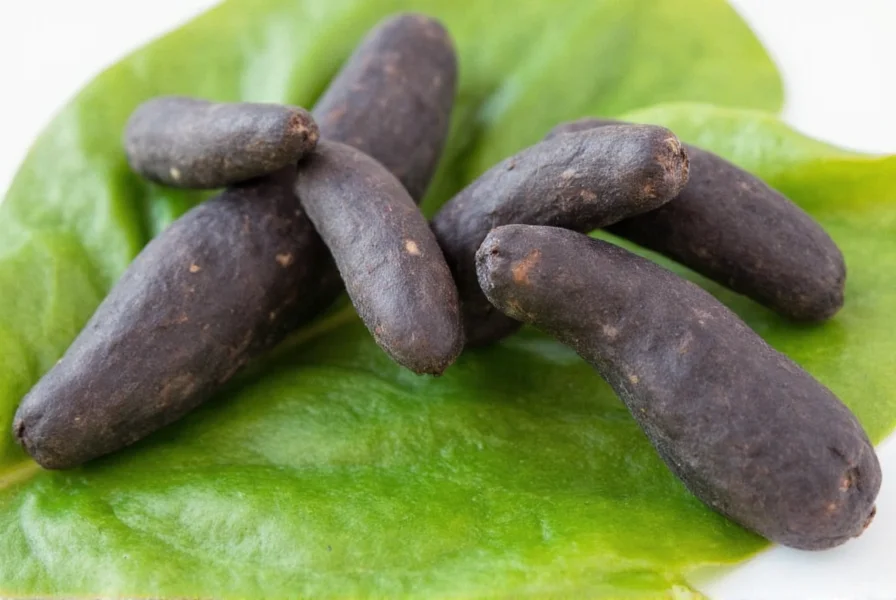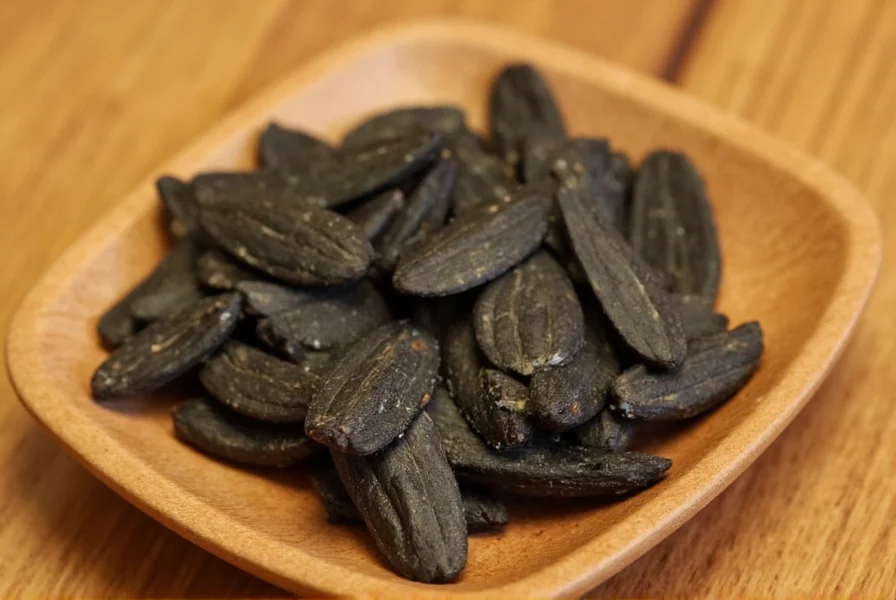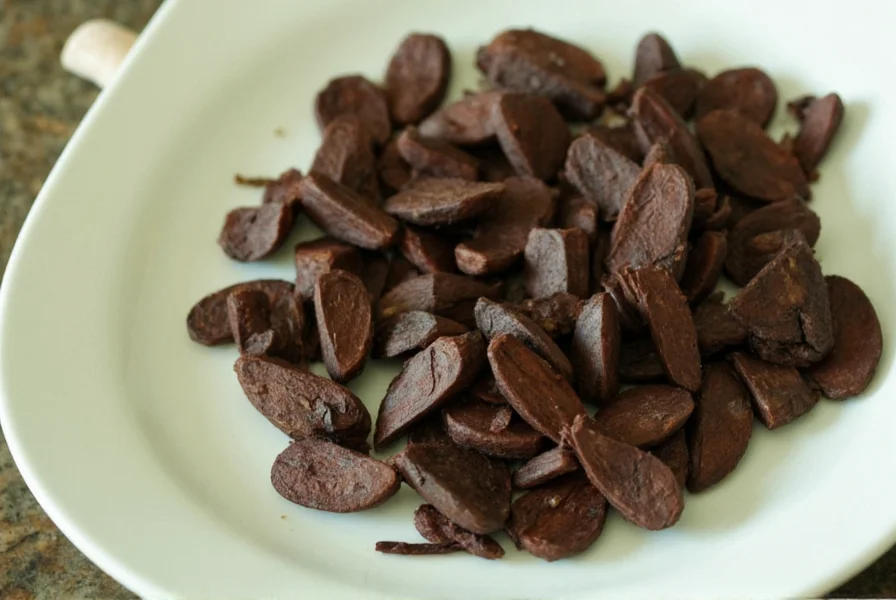Often confused with regular ginger, black ginger represents a completely different botanical species with unique properties. This comprehensive guide explores the scientific facts, traditional applications, and current research surrounding this remarkable plant.
Scientific Classification and Origins
Black ginger, scientifically known as Kaempferia parviflora, belongs to the Zingiberaceae family but is taxonomically distinct from Zingiber officinale (common ginger). Native to the tropical forests of Thailand, Laos, and Malaysia, this herb has been part of traditional Southeast Asian medicine for centuries. The plant grows to approximately 15-30 cm in height with heart-shaped leaves and distinctive purple flowers.

Physical Characteristics: Black Ginger vs Regular Ginger
The most distinguishing feature of black ginger is its rhizome's coloration. When cut open, the interior reveals a deep purple to black hue, unlike the pale yellow of common ginger. This color difference stems from higher concentrations of polyphenols, particularly polymethoxyflavones.
| Characteristic | Black Ginger | Regular Ginger |
|---|---|---|
| Scientific Name | Kaempferia parviflora | Zingiber officinale |
| Rhizome Color | Dark purple-black | Pale yellow |
| Primary Compounds | Polymethoxyflavones | Gingerols |
| Traditional Region | Thailand, Laos, Malaysia | Global cultivation |
Traditional Uses in Southeast Asian Medicine
Thai traditional medicine practitioners have utilized black ginger for generations to address various health concerns. Local communities refer to it as "krachai dam" and have incorporated it into remedies for:
- Digestive issues and stomach discomfort
- Joint pain and inflammation
- Energy enhancement and vitality
- Respiratory conditions
Traditional preparation methods typically involve drying and powdering the rhizome, creating decoctions, or incorporating it into medicinal wines.
Current Scientific Research on Black Ginger Benefits
Modern research has begun validating many traditional claims about Kaempferia parviflora health benefits. Multiple studies published in peer-reviewed journals have examined its properties:
A 2021 review in the Journal of Ethnopharmacology highlighted black ginger's significant antioxidant capacity, noting it contains up to 15 different polymethoxyflavones not found in regular ginger. These compounds demonstrate potent free radical scavenging abilities.
Research published in Nutrients (2022) investigated black ginger's metabolic effects. The study found that regular consumption of black ginger extract showed potential benefits for blood sugar regulation and lipid metabolism in clinical trials with human subjects.
Additional studies have examined black ginger's anti-inflammatory properties, with promising results suggesting it may help reduce markers of inflammation in the body. However, researchers consistently note that more extensive human trials are needed to confirm these preliminary findings.
How to Use Black Ginger Rhizome
For those interested in incorporating black ginger into their wellness routine, several preparation methods exist:
- Dried powder: The most common form, typically taken in 500-1000mg doses
- Tea: Simmer 1-2 grams of dried rhizome in water for 10-15 minutes
- Tinctures: Alcohol-based extracts offering concentrated benefits
- Capsules: Standardized extracts providing consistent dosing
When preparing black ginger tea, the distinctive purple color gradually infuses the water, creating a visually striking beverage with earthy, slightly spicy notes.

Safety Considerations and Potential Side Effects
Current research suggests black ginger is generally well-tolerated when consumed in appropriate amounts. However, certain considerations should be noted:
- Pregnant and breastfeeding women should consult healthcare providers before use
- Individuals taking blood thinners should exercise caution due to potential interactions
- Those with gallstone issues may want to avoid high doses
- Some users report mild digestive upset at higher doses
No serious adverse effects have been documented in clinical studies, but long-term safety data remains limited. As with any herbal supplement, starting with lower doses to assess individual tolerance is recommended.
Finding Authentic Black Ginger Products
Due to increasing popularity, the market has seen both authentic products and potential substitutes. When seeking where to buy authentic black ginger, consider these factors:
- Look for products specifying Kaempferia parviflora on the label
- Reputable suppliers should provide information about sourcing
- Authentic black ginger powder maintains a distinctive purple hue
- Third-party testing verification adds quality assurance
Be cautious of products making exaggerated health claims, as legitimate black ginger supplements focus on traditional uses supported by emerging research rather than miracle cures.
Conclusion
Black ginger represents a fascinating botanical with deep roots in Southeast Asian traditional medicine and growing scientific interest. While distinct from regular ginger in both appearance and chemical composition, it offers unique potential benefits worthy of further research. As scientific understanding of Kaempferia parviflora continues to develop, this remarkable plant may find broader applications in evidence-based wellness approaches. Those interested in exploring black ginger should seek quality products and consult healthcare professionals when appropriate.
Frequently Asked Questions
What is the difference between black ginger and regular ginger?
Black ginger (Kaempferia parviflora) and regular ginger (Zingiber officinale) belong to the same plant family but are different species. Black ginger has dark purple-black rhizomes containing polymethoxyflavones, while regular ginger has yellow rhizomes rich in gingerols. They differ in traditional uses, chemical composition, and geographic origins.
What are the scientifically supported benefits of black ginger?
Current research indicates black ginger may offer antioxidant properties, anti-inflammatory effects, and potential support for metabolic health including blood sugar regulation. Studies have documented its high concentration of polymethoxyflavones, which contribute to these potential benefits. However, more extensive human clinical trials are needed to confirm many of these findings.
How should black ginger be consumed for best results?
Black ginger can be consumed as a tea (simmer 1-2 grams dried rhizome in water), in capsule form (typically 500-1000mg), or as a tincture. For traditional preparation, the rhizome is dried and powdered. Starting with lower doses is recommended to assess individual tolerance, with most studies using 500-1500mg daily of standardized extract.
Are there any side effects associated with black ginger?
Black ginger is generally well-tolerated, but some individuals may experience mild digestive upset at higher doses. Those taking blood thinners should consult healthcare providers due to potential interactions. Pregnant and breastfeeding women should seek medical advice before use. No serious adverse effects have been documented in clinical studies, but long-term safety data remains limited.
Where does authentic black ginger come from?
Authentic black ginger (Kaempferia parviflora) is native to the tropical forests of Thailand, particularly in the northeastern regions. It also grows in parts of Laos and Malaysia. When purchasing products, look for those specifying Thai origin and containing the scientific name Kaempferia parviflora to ensure authenticity, as some products may substitute other plants.











 浙公网安备
33010002000092号
浙公网安备
33010002000092号 浙B2-20120091-4
浙B2-20120091-4